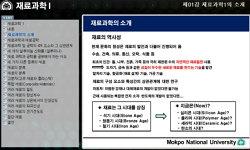This study investigates the interaction effects of mechanical property-based clusters and colorimetric tones on the subjective touch and color sensation of fabrics when sight and touch were simultaneously provided to humans. Each of six different silk...
http://chineseinput.net/에서 pinyin(병음)방식으로 중국어를 변환할 수 있습니다.
변환된 중국어를 복사하여 사용하시면 됩니다.
- 中文 을 입력하시려면 zhongwen을 입력하시고 space를누르시면됩니다.
- 北京 을 입력하시려면 beijing을 입력하시고 space를 누르시면 됩니다.


견직물의 역학적 성질과 색채 특성이 촉감각과 색채감각에 미치는 상호작용효과 = Interaction Effect of Mechanical Properties and Color Characteristics on the Subjective Touch and Color Sensation of Silk Fabrics
한글로보기https://www.riss.kr/link?id=A60047276
- 저자
- 발행기관
- 학술지명
- 권호사항
-
발행연도
2012
-
작성언어
-
- 주제어
-
KDC
500
-
등재정보
KCI등재,SCOPUS
-
자료형태
학술저널
-
수록면
360-370(11쪽)
- 제공처
- 소장기관
-
0
상세조회 -
0
다운로드
부가정보
다국어 초록 (Multilingual Abstract)
This study investigates the interaction effects of mechanical property-based clusters and colorimetric tones on the subjective touch and color sensation of fabrics when sight and touch were simultaneously provided to humans. Each of six different silk fabrics was colored by digital textile printing to have three tones (pale, vivid, and grayish) and its mechanical properties were measured by a Kawabata Evaluation System (KES). Touch and color sensation were identified to be primarily influenced by mechanical property-based clusters and tones, respectively. In touch, ``smooth``, ``warm``, ``heavy``, and ``soft`` were found to be affected by interactive effects of mechanical property-based clusters and colorimetric tone so that the pale tone tended to make differences smaller among the clusters for the touch sensation, while the grayish tone seemed to contribute to larger differences of ``heavy``. However, an interaction effect was not found in the color sensation with touch even though the color sensation was also influenced by mechanical property-based clusters.
동일학술지(권/호) 다른 논문
-
여름철 내열성 증진을 위한 정량적 착의훈련의 효과 (제1보)-20대 여성의 적정착의 온도 설정 의복내 온도를 중심으로-
- 한국의류학회
- 이효현 ( Hyo Hyun Lee )
- 2012
- KCI등재,SCOPUS
-
소비자의 기술 준비성, 패션 혁신성 및 참여수준 지각이 3차원 가상 피팅 시스템 수용의도에 미치는 영향
- 한국의류학회
- 양희순 ( Hee Soon Yang )
- 2012
- KCI등재,SCOPUS
-
의류상품 구매후기를 읽는 동기와 인터넷 점포 고객 유형화
- 한국의류학회
- 홍희숙 ( Hee Sook Hong )
- 2012
- KCI등재,SCOPUS
-
- 한국의류학회
- 도월희 ( Wol Hee Do )
- 2012
- KCI등재,SCOPUS




 ScienceON
ScienceON KISS
KISS







